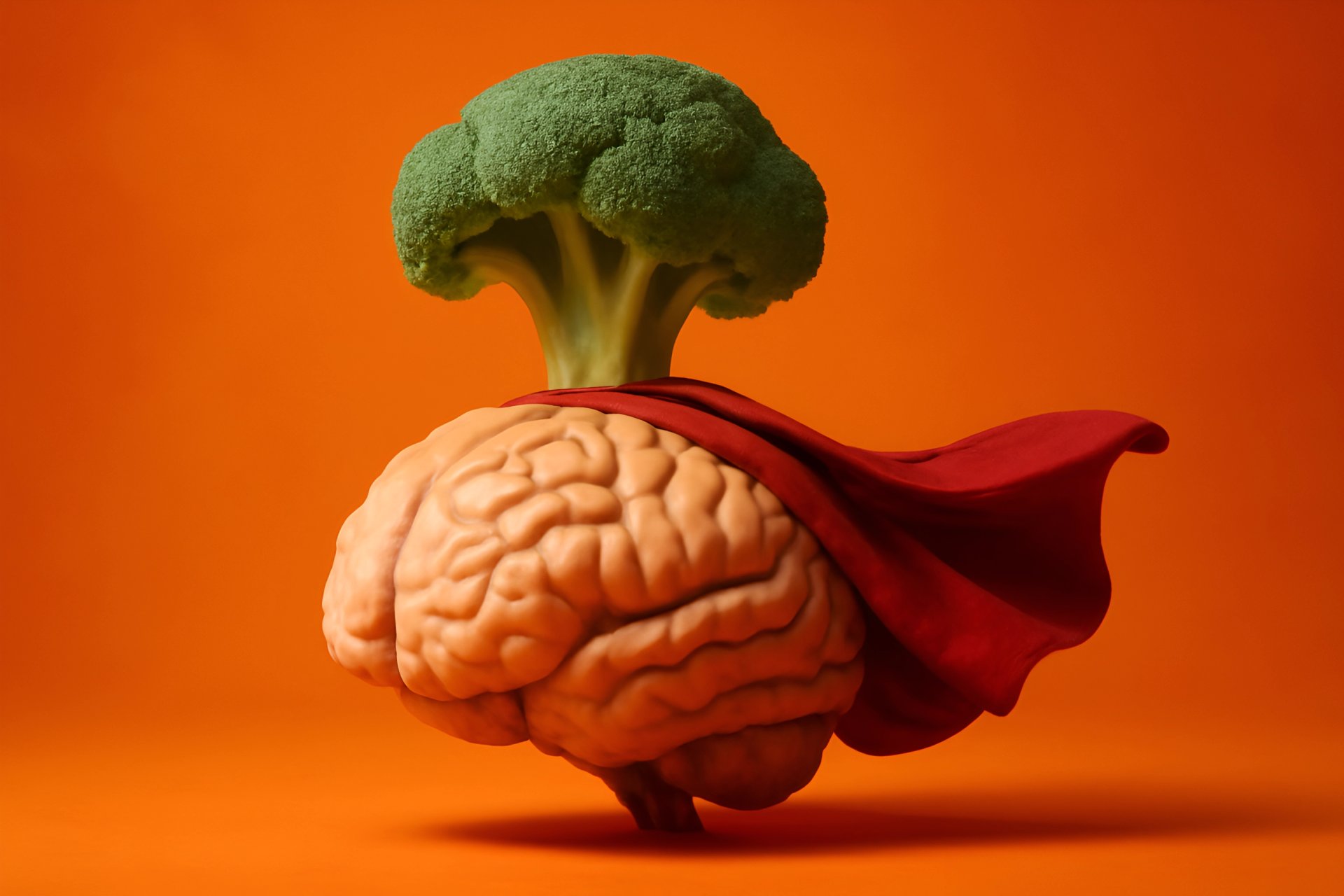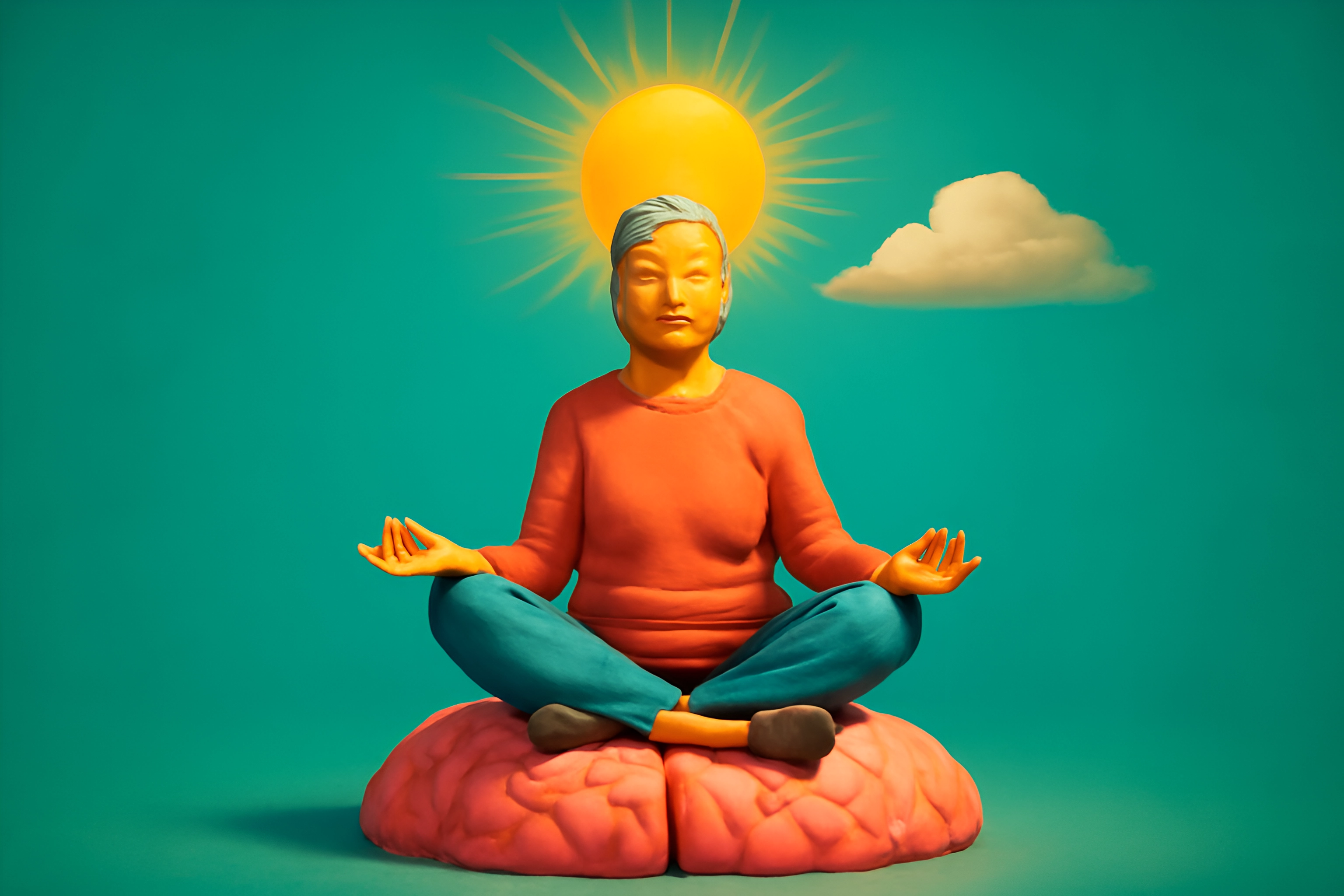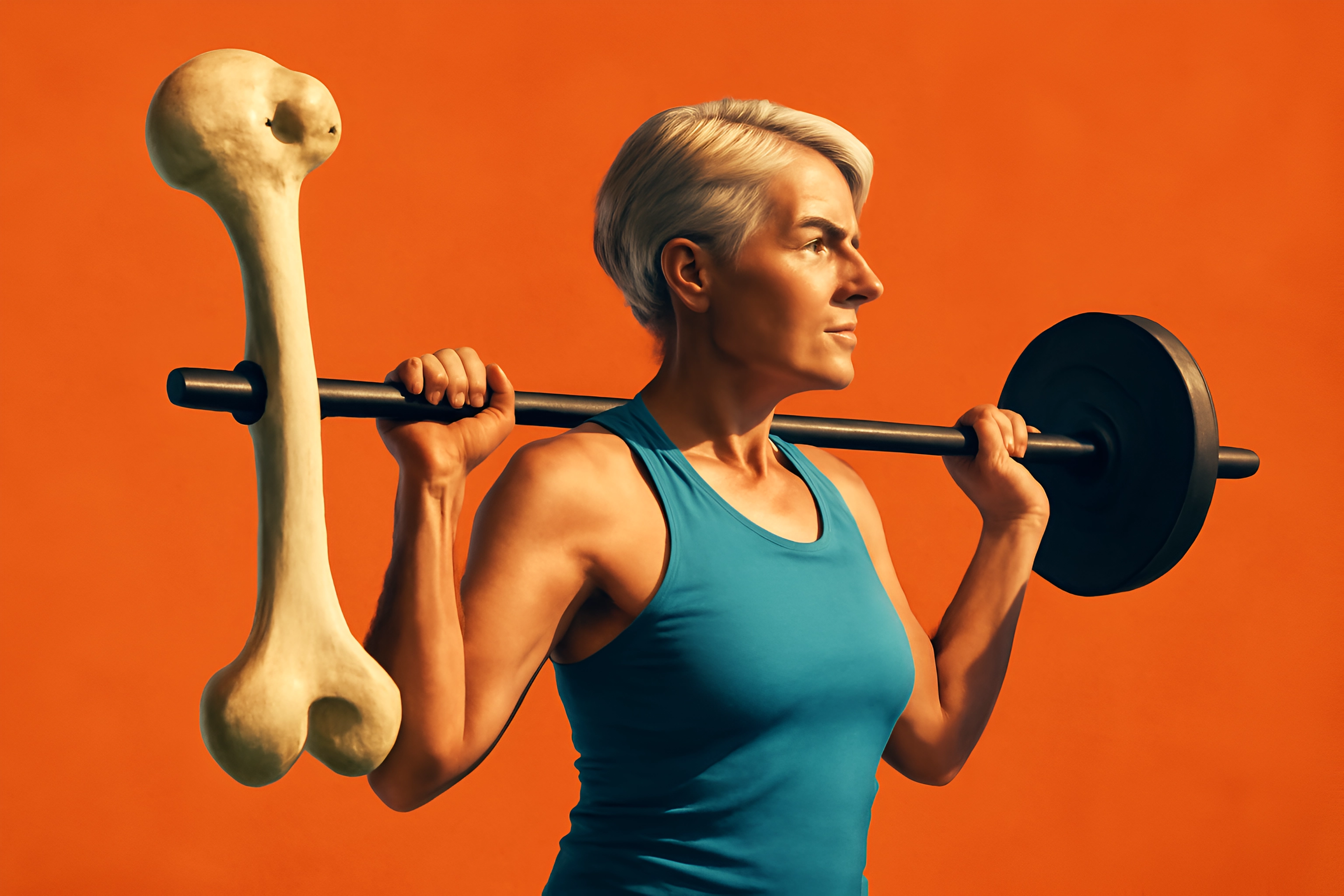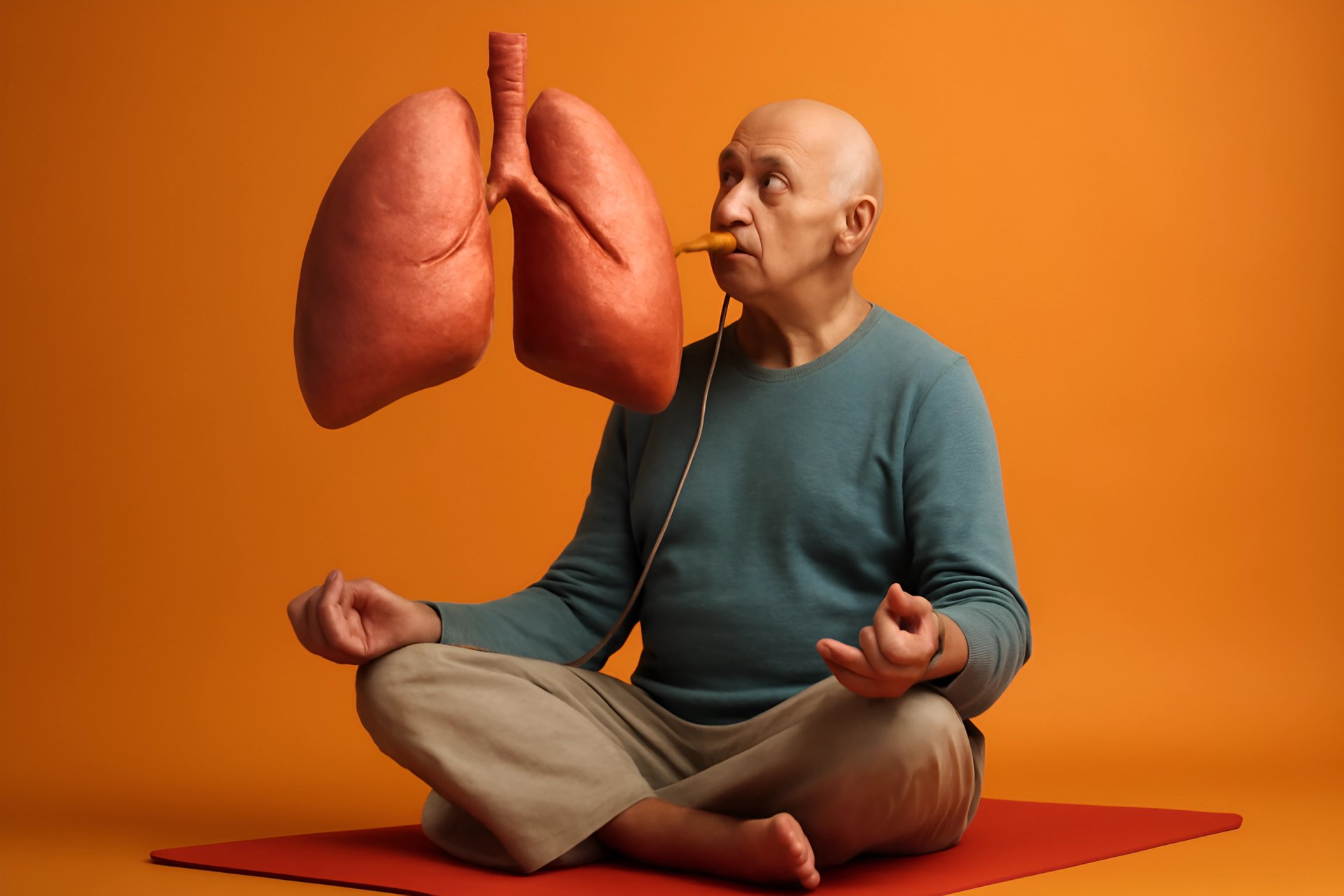
Reclaim Your Spark: Why Daily Habits are Key to Energy After 50
Remember those days when your energy seemed boundless, carrying you through long days with ease? While life certainly shifts and evolves after 50, that feeling of vibrancy, of being truly alive and energetic, is not just a distant memory. It's a state of being that is absolutely still within your reach, waiting to be rediscovered.
This chapter of life brings its own unique tapestry of experiences – perhaps retirement, more time for passions, or the wisdom gleaned from decades of living. It can also bring changes to our bodies and energy levels that we didn't anticipate. But here’s the empowering truth: you hold more power than you think to influence how you feel each day.
The secret isn't some monumental overhaul or a magic pill. Instead, it lies in the profound impact of small, consistent daily healthy habits. These simple actions, woven into the fabric of your day, can create a seismic shift in both your physical energy and your mental clarity. This article will serve as your holistic guide to simple, actionable daily routines for older adults, thoughtfully designed to nurture both your mind and body, helping you boost energy and embrace a more vibrant life.
The Mind-Body Energy Connection: More Than Just Physical
Ever notice how a stressful day can leave you feeling physically drained, even if you haven't moved much? Or how a good mood can make physical tasks feel lighter? That’s the mind-body connection in action, a powerful interplay that dictates so much of our daily energy. Your mental well-being—your stress levels, mood, and even cognitive sharpness—directly fuels or depletes your physical energy, and the reverse is just as true.
At FitOverFifty, we champion a holistic approach because we know that true vitality isn't found by focusing on just one piece of the puzzle, like exercise or diet alone. It’s about understanding how all aspects of your well-being are interconnected. When your mind is calm and clear, your body often follows suit with increased energy; when your body is nourished and active, your mental state often brightens.
This understanding is crucial, especially as we navigate life beyond 50. Many resources might offer tips for diet or exercise, but this guide uniquely combines strategies for both mental and physical fortitude, tailored specifically for you. We're not just talking about adding years to your life, but adding life, energy, and joy to your years by nurturing this essential mind-body synergy.
Morning Rituals: Setting the Tone for an Energized Day
How you begin your day can dramatically influence your energy levels for hours to come. Think of your morning routine as the launchpad for a day filled with vitality. It’s your opportunity to signal to your mind and body that you’re ready to thrive.
Hydrate First: The Simple Power of Water
Before you even think about coffee, reach for water. Your body undergoes mild dehydration overnight, and as JVS Human Services explains, drinking water upon waking can increase metabolic rate. This simple act helps to reawaken your systems gently and effectively.
Consider adding a squeeze of fresh lemon to your morning glass. Not only does it make hydration more appealing, but according to insights from the Mayo Clinic Connect blog, lemon provides vitamin C, which can aid in iron absorption from your breakfast. Remember, thirst perception can diminish with age, so making hydration a conscious first step is key; many seniors find that keeping a dedicated morning water glass by their bedside helps establish this habit.
This initial hydration sets a positive cascade for your body's functions. It aids digestion, helps transport nutrients, and can even improve cognitive function. Starting your day by replenishing your body’s most essential resource is a fundamental daily healthy habit to boost energy after 50.
Gentle Awakening: Movement to Greet the Day
After hydrating, coax your body into wakefulness with gentle movement. You don't need an intense workout; just 5-10 minutes can make a world of difference. This isn't about pushing limits; it's about kindling your inner fire.
Consider simple stretches to ease any morning stiffness, or try a few gentle yoga poses like Cat-Cow or Child's Pose. These movements improve circulation and lubricate your joints. As highlighted by Healthline's resources on senior stretching, even five minutes of dynamic stretching can improve cerebral blood flow, helping to clear away any lingering mental fog.
A short, leisurely walk, even just around your home or garden, can also be incredibly beneficial. It gets the blood flowing and signals to your body that it's time to be active. This gentle start helps prevent that feeling of grogginess and prepares you for whatever the day holds, improving circulation and easing stiffness almost immediately.
Mindful Moments: Starting with Clarity & Gratitude
Once your body is hydrated and gently awakened, take a few moments for your mind. In our busy lives, carving out even five minutes for quiet reflection can be transformative. This practice isn't about emptying your mind, but rather about setting a positive and calm intention for the day.
Try a simple meditation: sit comfortably, close your eyes, and focus on your breath. Notice the sensation of the air entering and leaving your body. Alternatively, engage in a few deep breathing exercises; the 4-7-8 breathing technique (inhale for 4, hold for 7, exhale for 8) is renowned for its calming effects. Research, such as that discussed by Contemplative Studies at Brown University, suggests older adults may experience enhanced benefits from meditation.
Another powerful practice is gratitude journaling. Simply writing down one or two things you're grateful for can shift your perspective and reduce stress. Starting your day with such mindful moments helps to cultivate a sense of peace and sets a positive mental tone, which is invaluable for sustained energy.
Fuel Up Right: The Energy-Boosting Breakfast
What you eat for your first meal significantly impacts your energy trajectory for the entire day. The goal is sustained energy, not a quick spike followed by a crash. This means choosing your breakfast wisely.
Focus on a balanced meal that includes protein, fiber, and healthy fats. Think oatmeal with berries and nuts, eggs with whole-wheat toast and a side of avocado, or Greek yogurt with fruit. These combinations provide a steady release of energy. According to the Cleveland Clinic, adequate protein intake is crucial for preventing sarcopenia, which can impact resting energy expenditure.
Steer clear of sugary cereals, pastries, or high-sugar fruit juices on their own. While they might offer an initial burst of energy, they often lead to a rapid drop in blood sugar, leaving you feeling tired and craving more sugar. A well-chosen breakfast is a cornerstone of healthy habits after fifty for all-day energy.
Nourish to Flourish: Nutrition Habits for Sustained Energy Throughout the Day
Your morning routine sets the stage, but how you nourish your body throughout the day keeps the energy flowing. It’s about making conscious choices that fuel your vitality, meal by meal, snack by snack. This isn't about restrictive dieting; it's about embracing foods that make you feel good.
The Importance of Balanced Meals & Snacks
Think of your meals as opportunities to refuel with high-quality energy sources. Prioritize whole foods: lean proteins, complex carbohydrates like whole grains and legumes, and an abundance of colorful fruits and vegetables. These foods provide a steady stream of nutrients that your body can efficiently convert into energy. As research from Harvard T.H. Chan School of Public Health suggests, healthy eating in midlife is linked to overall healthy aging.
Planning your meals can be a game-changer. When you have a plan, you're less likely to reach for unhealthy, convenience foods when hunger strikes. Consider dedicating a bit of time each week to outline your meals; this simple act can save you time, reduce stress, and ensure you’re consistently making energy-supporting choices. For more detailed guidance, explore our tips on Age-Defying Nutrition: Meal Planning Tips for Heart Health After 50.
This approach ensures your body receives a consistent supply of the building blocks it needs for optimal function. It’s not just about avoiding the "bad" stuff; it's about actively incorporating the "good" stuff that truly nourishes you from the inside out. This is a key component of daily healthy habits to boost energy after 50.
Smart Snacking: Bridging the Gaps Without the Crash
Snacks play a crucial role in maintaining energy levels between meals, preventing that dreaded afternoon slump. The key is to choose snacks that provide sustained energy, rather than a quick sugar rush. Think of snacks as mini-meals that keep your metabolic fire burning steadily.
Excellent choices include a handful of nuts like almonds or walnuts, a serving of Greek yogurt, a piece of fruit, or veggie sticks with hummus. These options offer a good mix of protein, fiber, and healthy fats, which help stabilize blood sugar levels. As highlighted by Presbyterian Senior Living, snacks like dark leafy greens can provide essential nutrients, contributing to overall well-being.
Avoid sugary treats, processed snack bars, or chips, which can lead to energy crashes and cravings. Keeping healthy snacks readily available—perhaps pre-portioned in your bag or at your desk—makes it easier to make smart choices when hunger pangs arise. This thoughtful approach to snacking is vital for maintaining consistent energy.
Hydration Heroics: Sipping Your Way to Vitality All Day
We talked about hydrating first thing in morning, but its importance doesn’t end there. Consistent hydration throughout the day is absolutely essential for maintaining energy levels, cognitive function, and overall health. Dehydration is a common, yet often overlooked, cause of fatigue. In fact, Sequoia Senior Solutions points out that 40% of seniors may experience chronic under-hydration, which can significantly impact energy.
Keep a water bottle handy and sip from it regularly, even if you don't feel particularly thirsty. Herbal teas, especially unsweetened varieties, can also contribute to your daily fluid intake and offer a comforting alternative to plain water. Set reminders on your phone if needed, or make it a habit to drink a glass of water before each meal.
Foods with high water content, like cucumbers and watermelon, can also supplement your fluid intake. Paying attention to your body's hydration needs is one of the simplest yet most effective energy-boosting routines for seniors. Remember, even mild dehydration can lead to feelings of sluggishness and mental fog.
Mindful Eating: Savoring Food and Listening to Your Body
How you eat can be just as important as what you eat when it comes to energy and digestion. Mindful eating involves paying full attention to the experience of eating – the taste, texture, and aroma of your food. It also means listening to your body's hunger and fullness cues.
When you eat mindfully, you tend to chew your food more thoroughly, which aids digestion and nutrient absorption. It also helps prevent overeating, as you become more attuned to when you're comfortably satisfied. The Harvard T.H. Chan School of Public Health emphasizes that mindful eating can reduce emotional eating episodes by enhancing interoceptive awareness.
Try to eliminate distractions during meals, such as watching TV or scrolling on your phone. Instead, focus on your plate and savor each bite. This practice not only enhances the enjoyment of your food but also supports better digestion and can lead to increased satisfaction from your meals, contributing to a more balanced energy state.
Move with Joy: Integrating Light Exercise & Activity into Your Daily Rhythm
Movement is life, and integrating regular physical activity into your daily rhythm is a cornerstone of feeling energetic and vibrant after 50. It’s not about grueling workouts or pushing yourself to exhaustion. It’s about finding ways to move your body that you enjoy, making it a sustainable and joyful part of your life.
Beyond Formal Workouts: Finding Movement in Everyday Life
Think beyond the gym or structured exercise classes. Opportunities for movement are all around you, woven into the fabric of your daily activities. The key is to recognize and embrace them. These small bursts of activity add up, contributing significantly to your overall energy levels and well-being.
Choose to take the stairs instead of the elevator whenever possible. Park your car a little further away from your destination and enjoy the extra steps. Get your hands dirty in the garden, an activity that combines movement with the therapeutic benefits of being outdoors. Even putting on some music and dancing around your living room counts!
These everyday movements keep your muscles engaged, your blood flowing, and your spirits lifted. They remind your body that it’s designed to move, helping to combat stiffness and lethargy. This approach makes physical activity less of a chore and more of an integrated, natural part of your daily routines for older adults.
Low-Impact, High-Reward: Gentle Exercises for Seniors
When it comes to more structured activity, focus on low-impact exercises that are kind to your joints while still providing significant energy-boosting benefits. These types of exercises enhance cardiovascular health, improve mood, and increase stamina without undue strain. The UK's NHS highlights that activities like brisk walking are excellent for older adults.
Brisk walking is a fantastic option – it’s accessible, free, and can be done almost anywhere. Tai Chi, with its slow, flowing movements, improves balance and reduces stress. Water aerobics offers a wonderful, joint-friendly workout, as the buoyancy of the water supports your body. Cycling, whether on a stationary bike or outdoors, is another excellent choice. For more inspiration, check out our Low-Impact Cardio Ideas: Heart-Healthy Exercises for the 50+ Crowd.
The goal is to find activities that you genuinely enjoy, making it more likely you’ll stick with them. Consistency is far more important than intensity when building healthy habits after fifty. If you're looking to structure these activities, our guide on How to Build a Low-Impact Exercise Routine Over 50 can provide a helpful framework.
Strength & Balance: Non-Negotiables for Independence & Energy
While cardiovascular exercise is important, don't overlook the crucial roles of strength and balance training. Maintaining muscle mass is vital as we age, as it supports metabolism, which in turn influences energy levels. Strong muscles also protect your joints and make everyday activities easier.
Incorporate light strength training using your own body weight, resistance bands, or light dumbbells a few times a week. Simple exercises like chair squats or wall push-ups can be very effective. Balance exercises, such as standing on one leg (with support nearby if needed) or practicing heel-to-toe walks, are critical for preventing falls, a major concern for older adults. As Regency Health Care Services notes, exercises like chair squats can improve sit-to-stand power significantly.
These practices not only boost your physical energy but also contribute significantly to your sense of independence and confidence. Knowing you have the strength and stability to navigate your day safely is incredibly empowering. These are truly non-negotiable elements for sustained vitality.
Cultivating Calm & Clarity: Daily Mental Wellness Practices
Just as physical habits fuel your body, mental wellness practices nourish your mind, leading to greater calm, clarity, and, ultimately, more energy. An agitated or overwhelmed mind can drain your physical reserves faster than almost anything else. Taking time each day to tend to your mental landscape is a powerful investment in your overall vitality.
Stress Busters: Quick Techniques for a Peaceful Mind
Life inevitably brings stressors, but how we respond to them can make all the difference to our energy levels. Having a toolkit of quick stress-busting techniques can help you navigate challenges with greater ease and maintain your equilibrium. These don't need to be time-consuming; even a few minutes can reset your nervous system.
Short meditation breaks, perhaps just 5-10 minutes of focused breathing, can work wonders. Deep breathing exercises, like the box breathing technique (inhale for 4, hold for 4, exhale for 4, hold for 4), can quickly calm an agitated state. Spending a few moments in nature, even if it's just looking out a window at trees or listening to birdsong, has been shown to reduce stress. The Mayo Clinic emphasizes that meditation can be a powerful tool for stress reduction.
Finding what works for you and incorporating these mini-breaks into your day can prevent stress from accumulating. This proactive approach to stress management is a key component of daily healthy habits to boost energy after 50, preserving your precious mental and physical resources.
Stay Connected: The Energizing Power of Social Interaction
Humans are social creatures, and meaningful connections are vital for our mental and emotional well-being. Feeling connected to others can be incredibly energizing, combating feelings of loneliness or isolation that can sometimes creep in, especially during life transitions. Social interaction provides a sense of belonging and purpose.
Make an effort to nurture your relationships. Call a friend you haven't spoken to in a while, schedule regular meetups, or join a club or group centered around an interest you have. Volunteering your time for a cause you care about can also be a wonderful way to connect with others while making a positive impact. As TerraBella Senior Living's blog discusses, activities like volunteering can enhance self-efficacy.
These interactions don't always need to be deep and lengthy. Even brief, positive exchanges can lift your spirits and boost your energy. Prioritizing social connection is a joyful way to enhance your vitality.
Brain Boosters: Keeping Your Mind Active & Engaged
Just like your body, your brain thrives on activity and new challenges. Keeping your mind active and engaged is crucial for cognitive health, which in turn supports your overall energy and zest for life. An engaged mind is a sharper, more resilient mind.
Embrace activities that stimulate your brain. This could be anything from doing crossword puzzles or Sudoku to reading books on new subjects. Consider learning a new skill, like a language, a musical instrument, or a new craft. These activities create new neural pathways and keep your cognitive functions agile.
The key is to find activities that you find enjoyable and stimulating. The process of learning and engaging your mind can be inherently energizing, providing a sense of accomplishment and keeping your mental faculties sharp. This is an important aspect of holistic healthy habits after fifty.
The Power of "No": Protecting Your Energy by Setting Boundaries
One of the most underrated yet profoundly effective ways to protect your energy is learning to say "no." As we get older, we often have many demands on our time and energy. While being generous is wonderful, overcommitting can lead to overwhelm, stress, and ultimately, energy depletion.
Setting healthy boundaries means recognizing your limits and honoring them. It's about understanding that you don't have to say yes to every request or invitation. Protecting your time and energy is not selfish; it's an act of self-preservation that allows you to show up more fully for the things that truly matter to you.
Learning to politely decline commitments that would stretch you too thin prevents burnout and ensures you have enough energy for your own well-being and priorities. This skill is crucial for maintaining balance and vitality, especially when navigating the many opportunities and responsibilities that life after 50 can bring. It’s about saying yes to your own well-being.
Winding Down: Evening Habits for Restorative Sleep & Next-Day Energy
The quality of your sleep tonight directly impacts your energy levels tomorrow. Creating evening habits that promote restorative sleep is just as important as your morning rituals. A peaceful wind-down routine signals to your body and mind that it's time to rest and rejuvenate.
Digital Detox: Unplugging for Better Sleep Quality
The blue light emitted by screens—phones, tablets, computers, and televisions—can interfere with your body's production of melatonin, the hormone that regulates sleep. This can make it harder to fall asleep and can reduce the quality of your sleep. An evening digital detox is a powerful habit for better rest.
Try to avoid screens for at least an hour, ideally longer, before bedtime. This allows your brain to naturally start preparing for sleep. If you find it hard to disconnect, set an alarm to remind you when it's time to power down your devices. The National Sleep Foundation reports that evening digital detoxes can increase melatonin secretion, aiding sleep onset.
Use this screen-free time for relaxing activities instead. This simple change can make a significant difference in how quickly you fall asleep and how refreshed you feel in the morning. It’s a crucial step in optimizing your daily routines for older adults for better energy.
Creating a Relaxing Bedtime Routine
Just as a morning routine sets the tone for an energized day, a consistent bedtime routine prepares you for a night of restful sleep. This routine should be composed of calming activities that help you transition from the busyness of the day to a state of relaxation. This signals to your body that sleep is approaching.
Consider a warm bath, perhaps with Epsom salts, to relax your muscles. Reading a physical book (not on a screen) can be a wonderful way to unwind. Listening to calming music, practicing gentle stretching, or engaging in a quiet hobby like knitting can also be effective. The key is to choose activities that you find personally soothing.
The consistency of this routine is important. Performing the same relaxing activities in the same order each night helps to create a strong sleep cue for your brain. This makes it easier to drift off peacefully and enjoy deeper, more restorative sleep.
Optimizing Your Sleep Environment
Your bedroom environment plays a significant role in the quality of your sleep. An ideal sleep sanctuary should be conducive to uninterrupted rest. Taking steps to optimize your sleep space can lead to noticeable improvements in how well you sleep and, consequently, how energetic you feel.
Aim for a room that is dark, quiet, and cool. The National Sleep Foundation suggests that cooling bedrooms to around 65°F (18°C) can increase sleep efficiency. Use blackout curtains if necessary to block out external light, and consider earplugs or a white noise machine if noise is an issue.
Ensure your mattress and pillows are comfortable and supportive. A good sleep environment is an investment in your health and energy. Making these adjustments can transform your bedroom into a true haven for rest.
Putting It All Together: Crafting Your Personalized Energy-Boosting Routine
We've covered a wealth of ideas for mind and body, but the true power comes from weaving these into a routine that feels right for you. This isn't about adopting every suggestion overnight. It's about thoughtful integration and personalization.
The best approach is to start small. Don't try to overhaul your entire life in one go, as that can quickly become overwhelming. Instead, pick just one or two new habits from this guide that resonate with you and focus on incorporating them into your daily life. Perhaps it's starting your day with a large glass of water, or committing to a 10-minute walk after lunch.
Remember, consistency trumps perfection every single time. It's far better to do a small habit consistently than to aim for a big change sporadically. There will be days when things don't go as planned, and that's perfectly okay. Simply acknowledge it and get back on track with your next opportunity.
Consider keeping a simple journal to track your new habits and how you feel. Noting down your energy levels, mood, and sleep quality can help you see the tangible benefits of your efforts, which is incredibly motivating. This also allows you to tweak your routine as you learn what works best for your unique needs and preferences.
Ultimately, these daily healthy habits to boost energy after 50 are designed to be adaptable. Listen to your body, honor your preferences, and don't be afraid to experiment. The goal is to create a sustainable set of practices that genuinely enhance your vitality and joy in this vibrant chapter of life.
Embrace Your Vitality: It’s Never Too Late to Feel More Energetic!
The journey to increased energy and well-being after 50 is paved with small, intentional daily choices. As we've explored, nurturing both your mind and body through consistent, positive habits is a powerful strategy for reclaiming your spark and living with greater vitality. It’s not about chasing a younger version of yourself, but about embracing the best version of yourself, right now.
The FitOverFifty philosophy is rooted in the belief that aging with strength, energy, and joy is not just possible, but entirely achievable. You have the power within you to cultivate these energy-boosting routines for seniors, transforming how you feel day by day. Remember, it’s never too late to start, and every small step forward makes a difference.
Now, we’d love to hear from you! What's one new habit from this list that you're excited to try this week? Do you have any favorite energy-boosting tips that work wonders for you? Share your thoughts and experiences in the comments below – your insights could inspire someone else! If you found this guide helpful, please consider sharing it with friends or family who might benefit. And don't forget to subscribe to the FitOverFifty newsletter for more wellness tips, inspiration, and support on your journey to a more energetic you!















